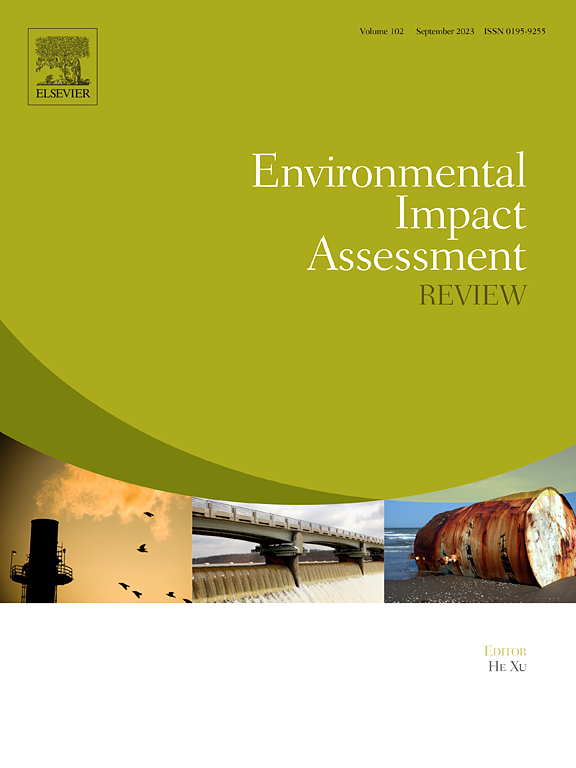Potential reduction of greenhouse gas emissions through dietary structure changes and guidelines for environmental sustainability
IF 9.8
1区 社会学
Q1 ENVIRONMENTAL STUDIES
引用次数: 0
Abstract
Changes in residents' dietary patterns significantly influence both dietary consumption and greenhouse gases (GHGs) emissions. Based on IPCC guidelines and input-output analysis, this study assess the spatiotemporal characteristics of GHGs emissions across different age groups, genders, and urban-rural regions. Furthermore, we simulate the potential for GHGs emissions reduction under five food substitution scenarios by 2050. The results indicate that the 15–64 age group emits approximately four times more GHGs emissions than other age groups, while urban areas emit about twice as much as rural areas. Among the scenarios, adopting a Mediterranean dietary structure to fill protein gaps leads to the lowest GHGs emissions, with an estimated reduction of 533.89 Mt. CO₂eq by 2050. These findings suggest that adjusting sustainable dietary structures should be tailored to specific contexts, with a focus on substituting meat consumption with high-protein, low-carbon alternatives. This study provides insights for optimizing dietary structures and formulating policies aimed at reducing GHGs emissions associated with dietary consumption.

通过改变饮食结构和环境可持续性指导方针可能减少温室气体排放
居民膳食结构的变化对居民膳食消费和温室气体排放均有显著影响。基于IPCC指南和投入产出分析,本研究评估了中国不同年龄、性别和城乡区域的温室气体排放时空特征。此外,我们还模拟了到2050年在五种粮食替代方案下温室气体减排的潜力。结果表明,15-64岁年龄组的温室气体排放量约为其他年龄组的四倍,而城市地区的排放量约为农村地区的两倍。在这些情景中,采用地中海饮食结构来填补蛋白质缺口的温室气体排放量最低,预计到2050年将减少533.89亿吨二氧化碳当量。这些发现表明,调整可持续饮食结构应根据具体情况量身定制,重点是用高蛋白、低碳的替代品代替肉类消费。该研究为优化饮食结构和制定减少与饮食消费相关的温室气体排放的政策提供了见解。
本文章由计算机程序翻译,如有差异,请以英文原文为准。
求助全文
约1分钟内获得全文
求助全文
来源期刊

Environmental Impact Assessment Review
ENVIRONMENTAL STUDIES-
CiteScore
12.60
自引率
10.10%
发文量
200
审稿时长
33 days
期刊介绍:
Environmental Impact Assessment Review is an interdisciplinary journal that serves a global audience of practitioners, policymakers, and academics involved in assessing the environmental impact of policies, projects, processes, and products. The journal focuses on innovative theory and practice in environmental impact assessment (EIA). Papers are expected to present innovative ideas, be topical, and coherent. The journal emphasizes concepts, methods, techniques, approaches, and systems related to EIA theory and practice.
 求助内容:
求助内容: 应助结果提醒方式:
应助结果提醒方式:


